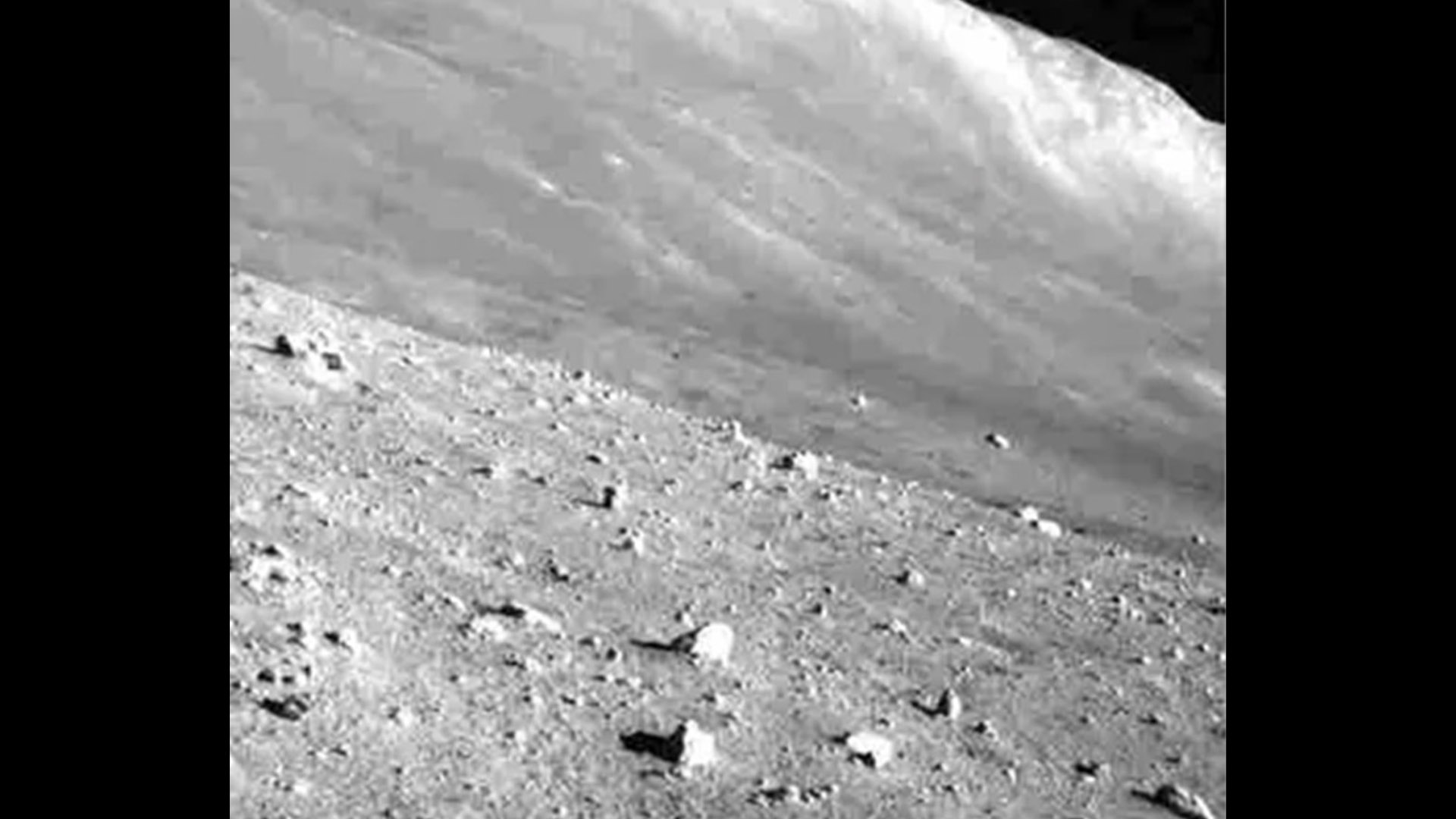
SLIM's not dead yet.
The SLIM spacecraft, Japan's first-ever successful moon lander, has survived the long, cold lunar night for the second time.
Mission team members announced the news via X on Wednesday (March 27), in a post that also featured a photo newly snapped by the lander's navigation camera.
SLIM, whose name is short for "Smart Lander for Investigating Moon," launched last September and landed on Jan. 19, making Japan just the fifth nation to pull off a soft lunar touchdown. (The other four are the Soviet Union, the United States, China and India.)
Related: 'Everything has changed since Apollo': Why landing on the moon is still incredibly difficult in 2024
The solar-powered SLIM landed on its nose that day, a less-than-optimal orientation for harvesting sunlight. The 440-pound (200 kilograms) probe went dark shortly thereafter but then woke up on Jan. 28 and began gathering data.
The mission team put SLIM into hibernation a few days later ahead of the two-week-long lunar night, during which surface temperatures at its locale dropped to around minus 208 degrees Fahrenheit (minus 130 degrees Celsius).
Get the world’s most fascinating discoveries delivered straight to your inbox.
SLIM had already achieved its primary mission goals — making a precision touchdown, deploying two tiny rovers and conducting a variety of science work — by that point and was not expected to open its eyes again. But the probe did so, waking up late last month.
Last night, we received a response from #SLIM, confirming that the spacecraft made it through the lunar night for the second time! Since the sun was still high and the equipment was still hot, we only took some shots of the usual scenery with the navigation camera. #GoodAfterMoon pic.twitter.com/5BjIr7vxMGMarch 28, 2024
SLIM now has a second revival under its belt, though the extreme conditions are beginning to take their toll on the plucky little robot.
"According to the acquired data, some temperature sensors and unused battery cells are starting to malfunction, but the majority of functions that survived the first lunar night was ma[i]ntained even after the second lunar night!" mission team members said in another X post on Wednesday night.
SLIM's January touchdown was followed a month later by that of Odysseus, which was built and operated by Houston-based company Intuitive Machines. Odysseus' lunar touchdown was the first ever by a private spacecraft and the first for an American vehicle since Apollo 17 in 1972.
Odysseus operated for a week on the lunar surface, then went silent ahead of its first lunar night. And that silence is forever; Intuitive Machines announced earlier this week that Odysseus' mission is over.
Originally posted on Space.com.




